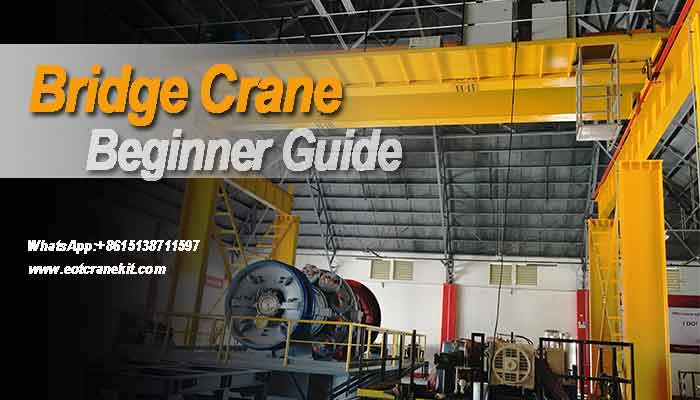
Bridge Crane Guide for Beginners, Bridge Crane Manufacturer Tips
What is a bridge crane? An overhead crane, also known as a bridge crane, is a piece of heavy machinery capable of transporting extremely heavy cargo and equipment from one point to another in a safe and exact manner. They are precision adjusted and developed to match a certain type of loading application due to the nature of the task they do.
Bridge cranes are available in a range of sizes, styles, shapes, and configurations, with easily interchangeable components and attachments to improve capacity and performance. They're utilized to load and unload items, move materials, lift dies from stamping machines, and feed raw materials.
Efficiency and safety are the two key reasons for deploying a bridge crane. Bridge cranes can work at a far faster rate than floor or land-based cranes. Bridge cranes can safely transfer products in hazardous, dangerous, and extreme circumstances, such as where heated metals, chemicals, or toxic materials are present.
How bridge cranes work
When it comes to moving large goods or exceptionally big loads through a production facility, a bridge crane is far more convenient and efficient than navigating corridors and floor space. Bridge cranes are capable of safely lifting extremely big loads and can raise, descend, and travel horizontally along a rail or beam. An operator uses a pendant station or wireless control to regulate the crane's travel and speed.
Bridge cranes can move weights from side to side, forward and backward, and cover a rectangular area. Though no two bridge cranes are same, they all have the same basic components, including a hoist, trolley, beams, girders, and control systems.
How bridge cranes work
Over the rectangular working area, the bridge of a bridge crane runs longitudinally along tracks built on runway beams. Steel girders are joined to runways at either end of the girders to form bridges.
- Lifting Trolley - The lifting trolley contains the lifting mechanism, which includes a brake, motor, reducer, drum, and pulley set. The motor rotates a drum through a reducer, which then drives the wire rope or chain that raises and lowers the load.
- Crane Driving Mechanism - A crane's driving mechanism is made up of two sections. A long transmission drives both sides of the wheels, while a separate motor powers each pair of wheels separately.
- Power Supply - Because there are so many distinct types of power systems, each with its own set of connections, power supply is a complicated subject. Conductor bars, festoon systems, and cable reels are the three most frequent varieties.Although there are variations of bridge cranes that function on pneumatic power, the bulk of bridge cranes are powered by electricity. The crane runway and bridge crane control are powered by cable festoons, conductor bars, or reel cables. The trolley and hoist are both powered by this power feed.
Conductor Bar — On the crane's runway or monorail, a conductor bar system is installed. They're suitable for runways with several bridges. Suppor is available.Festoon System - A festoon system can be mounted on a track, an I beam, or a square rail. On a trolley that goes along the track, they employ flat or round cables. The cable hangs below the track and expands or retracts in response to the trolley's position.Cable Reel — Conductor cable is released, retrieved, and stored using spring-loaded or motorized cable reels. For mainline power along a runway or monorail, this method is employed.
- Lifting Height-The type of engine and crane capacity are both affected by the height at which the crane is mounted. The lift height of a bridge crane is the distance from the ground to the hook's saddle, which is an important measurement since it guarantees that the hook is not damaged.
Another significant consideration is the C dimension, which refers to the hook's maximum lifting height. The C dimension refers to the distance between the trolley wheels and the hook saddle.
- Controls - For safety and convenience of operation, each aspect of a bridge crane's movements is controlled by safe crane controls, including the pendant control, remote control or cabin control or automatic control with software and electronics that work in tandem. The operator of a bridge crane has complete control over the load at all times. A start and stop button is the most basic kind of control, although more complicated controllers use joysticks and tablets to program a larger range of motions and movements. The crane's restrictions, which determine what it can accomplish and where it may move, are programmed into the controls. Control systems give statistics on utilization, diagnostics, and ways for preventing operational problems.
- Hoists- Chain and wire hoists are the two most used types of hoists for bridge cranes.
- A chain hoist is designed to raise loads of less than 10 tons and is held in place by a chain holder. They offer genuine vertical lift, rising straight up without lateral drift.
- Wire rope hoists are capable of lifting 10 tons or more and wrap around the weight. They provide you more choices and more flexibility. Wire rope hoists, unlike chain hoists, are prone to lateral movement.
Bridge crane Term
- Axial load - In a jib crane, axial load refers to the entire vertical force acting on the supporting structure.
- Girder - girders, trucks, or other elements meet in a rectangular cross section called a box section.
- Drag Brake — a locking system that provides braking without the use of force.
- Explosion-Proof — composed of materials that prevent explosions
- Lifting Capacity – the maximum lifting weight for a crane. Height Under Boom (HUB) – the distance from the floor to the underside of the boom.
- Lifting Speed - the rate at which the load is lifted by the lifting mechanism.
- Span – the distance between the centerline of the wheels at each end of the main beam.
- Running Speed – the speed of the crane mechanism and trolley.
- Two blocking -When the cargo suspended from the hook is jammed against the crane, it is referred to as two blocking.
- Web plate -The plate that joins the upper and lower flanges of a girder to the web plate is known as the web plate.
- Wheel load- The weight in pounds that a single crane wheel will encounter is known as the wheel load.
- Work duty - The load rate, which can be light, medium, heavy, or very heavy, determines the work duty.
Uses for bridge cranes
It can be risky and time-consuming to move bulky, heavy, and awkward goods through the aisles and floor of a manufacturing facility. Applications can be completed more efficiently, cost effectively, and safely by utilizing a factory's overhead area by installing a bridge crane. To save time and energy, loads can be readily lifted, lowered, and transported through the vacant space.
The crane's movement is controlled by a variety of control devices by specially trained operators. When considering transportation possibilities, consider the available space as well as the feasibility of building a bridge crane.The general uses of bridge crane are as following:
Warehousing - When considering the requirement for a bridge crane, the first industry that comes to mind is warehousing, where supplies, equipment, and materials are constantly moved, positioned, and readied. The timely movement of heavy objects from storage to the shipping dock is a primary advantage of a bridge crane in warehousing.
Assembly –Lifting and transferring partial components from one site to another for completion is required in industries that assemble huge equipment. Forklifts, AGVs, and other forms of material handling are insufficient and dangerous, necessitating the employment of a bridge crane. Assemblies can be easily shifted as part of the manufacturing process.
Transportation –The same rules that apply to warehousing apply to transportation, which involves loading large, bulky goods onto planes, trains, and trucks. Large goods can be simply arranged for transit using bridge cranes. This is especially true in international commerce, where large containers and goods must be lowered into ship holds.
Equipment Repair –When a punch press or other production equipment needs to be repaired, bridge cranes aid in the process by gradually moving and positioning pieces for convenient access. Heavy equipment can be moved from its permanent site to a repair shop and then returned using gantry and bridge cranes. Lifting machinery up and over other equipment to be placed at a repair station is made easier by bridge cranes.
Types of bridge cranes
When you've decided to build a bridge crane, the following step is to figure out which sort of bridge crane is best for your needs. Bridge cranes are available in many different configurations, sizes, forms, and designs. Each type is tailored to meet the requirements of a certain application.
Choosing the right crane might be difficult due to the large number of options available. The correct crane and its specs may significantly boost production and efficiency while also streamlining operations.
Bridge Crane –A bridge crane has two runways built into and attached to the superstructure on either side of the building. End trucks that run on wheels on the runway connect the runways with a bridge. The bridge can be set up as a single or double bridge, with a trolley on each side. The trolley and hoist run along the bottom of the bridge, underhung.
Gantry Crane –With one exception, a gantry crane is quite similar to a bridge crane. The runways of a bridge crane are attached to the building's superstructure. A gantry crane is supported and moved by four legs. The legs are attached to the bridge, trolley, and hoist. To position the bridge for loading, lifting, and moving, the legs move along rails. Like a railway track, the leg rails are installed on the floor, ground, or foundation.
Monorail Crane –Monorail cranes, unlike gantry and bridge cranes, do not have a bridge or girders. The trolley is attached to a ceiling-mounted I beam and runs down the flat surface at the bottom of the beam. The material is carried by the hoist and pushed by the trolley in a straight line along the beam. The flexibility of a monorail bridge crane to have curves, branches, and switches to change height and direction is one of its most valuable features.
Jib Crane –A jib crane is a type of bridge crane that does not require the use of a bridge, runway, or any other type of track system. They can be mounted and put in a variety of ways, from being attached to a wall to standing alone. Jib cranes are space-saving, cost-effective, and ideal for moving large components. They can be designed to revolve in a full circle or have a limited rotation range. Even small jib cranes can lift and transfer many tons.
Top and Bottom Running Crane –The location of the wheels on the bridge girders determines whether the crane is top or bottom running. The bridge runs along the top of the runway beams, with top-running cranes. The beam bridge is supported on the bottom of the runway beams in the event of bottom running, or underhung cranes. The crane wheels travel along the girders' lowest flange.
Top-running cranes have a greater lifting capability and can raise bigger loads. Underhung cranes are often used for lighter loads and have a smaller capacity because they are supported by roof or ceiling supports.
Automated Crane –The control of a bridge crane can be fully automated, in which the operator programs the crane's actions and it completes each task without human intervention, or semi-automated, in which the operator controls specific functions. The type of software programmed into the crane is crucial to a completely automated system. This type of technology is appropriate for demanding and hazardous environments where the operator may be harmed. Another advantage of an automated system is that it frees the operator from the boredom of repetitive movements.
By removing the human, automated systems produce fewer errors or blunders and finish processes quickly and flawlessly. Lifting, placing, stacking, and storing are examples of duty cycles that can be repeated several times during a period of time ranging from eight to twenty-four hours.
Workstation Crane –Workstation cranes are a type of bridge crane that can handle light to big loads. They can lift up to two tons and are available in a variety of configurations to match any area. Workstation cranes are smaller and more compact than bigger cranes, allowing them to be readily put beneath jib or other types of bridge cranes to provide a more efficient work cell.
The ergonomics of workstation cranes are crucial, as they eliminate the need to lift big products or items. Workstation cranes boost worker morale, quality, productivity, and safety, among other things.
Grab bridge cranes –A grab bridge crane might have a bridge, gantry, or folding arm design. It comes with a bucket, an orange peel, and a clam shell. This crane has a single or double girder design and is used to handle bulk goods. Grab cranes are used to load logs, minerals, coal, sand, and gravel at mines, ports, and station yards.
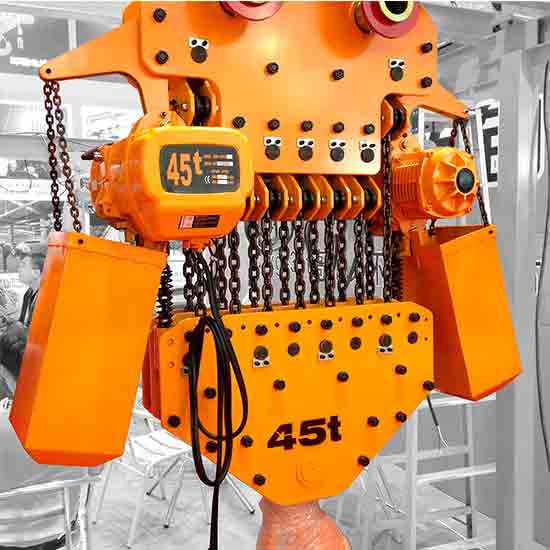
Electric chain hoists mounted on hook, lug, manual or electric hoist trolley for types of electric chain hoist cranes with capacity of 500kg, 5 ton, 10 ton, 32 ton.
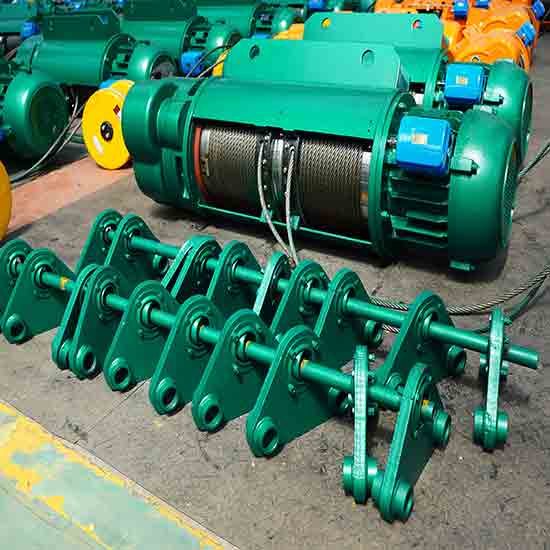
Types of wire rope hoists designs for overhead hoist cranes- explosion-proof cable hoist, low profile wire hoist & single & double girder hoists for your hoist cranes.
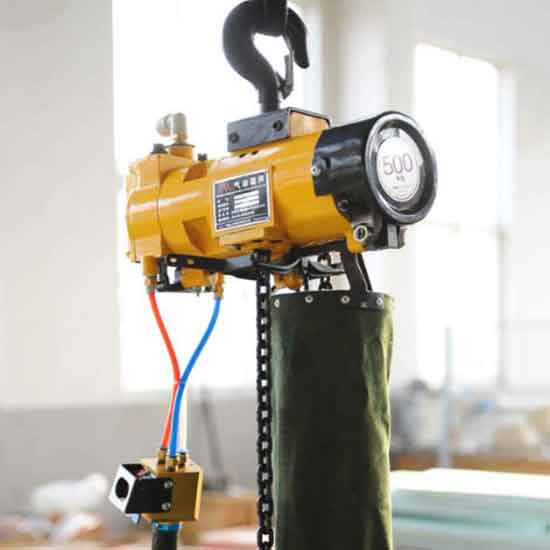
Safe & fast air operated hoists. Air hoist & pneumatic hoist is a compressed air powered hoist & air operated hoists, various hoist designs,wide specification, good price.
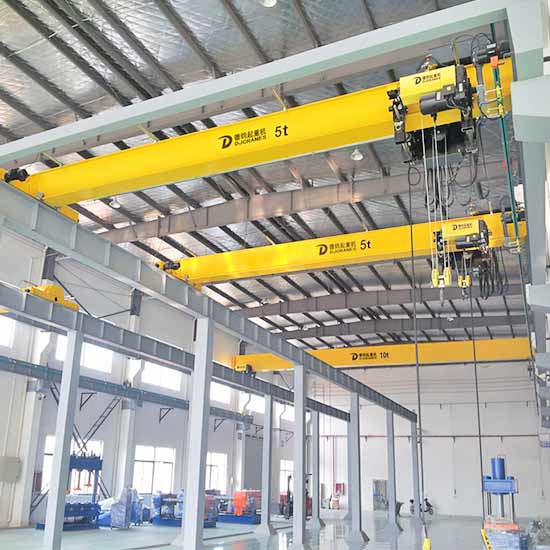
European standard overhead hoist crane, Small overhead crane:European single girder overhead cranes, compact FEM hoist crane design, small & light overhead hoist crane.
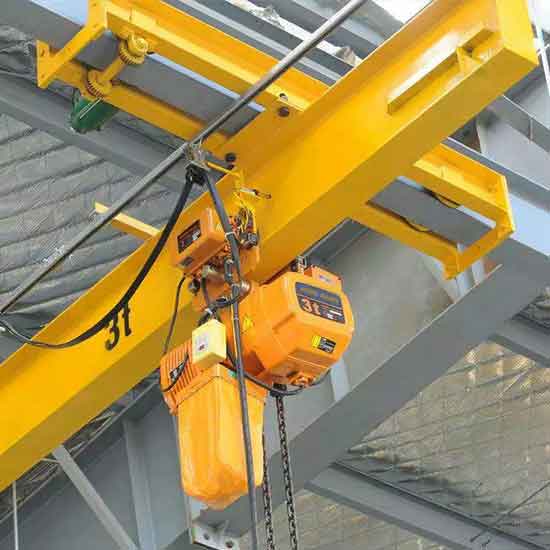
1 ton -10 ton underhung bridge crane, light single girder overhead crane design, suspended on overhead roof, free floor space, economical underhung crane.
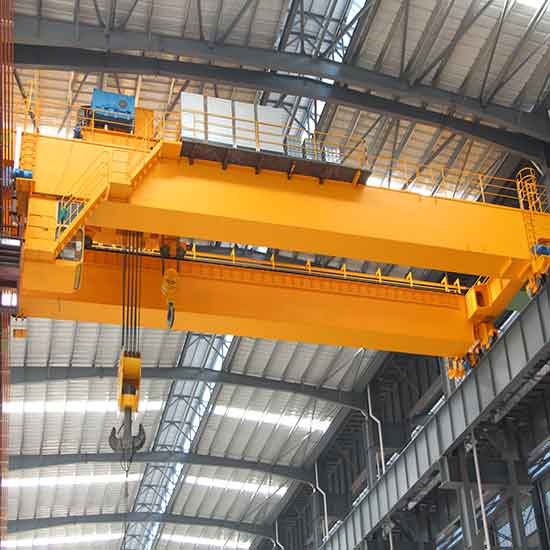
FEM/ DIN open winch bridge crane-European standard double girder overhead crane with open winch trolley, your heavy duty winch crane up to 320 ton.
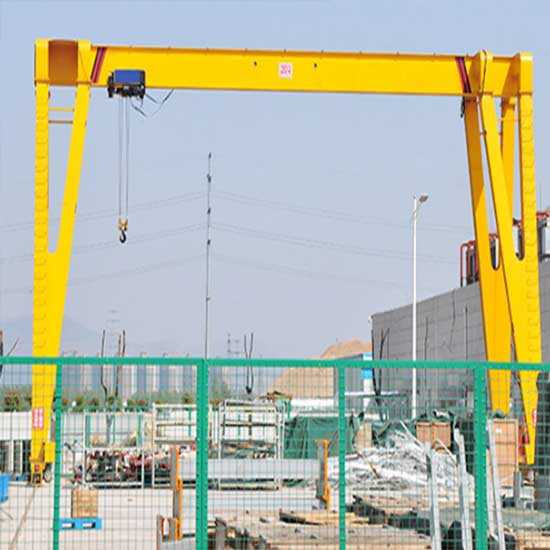
Single girder hoist gantry cranes, FEM,DIN & ISO standards: Single beam gantry cranes, European style box girder, FEM hoists for 3 ton, 5 ton, 10 ton, & 16 ton load handling.
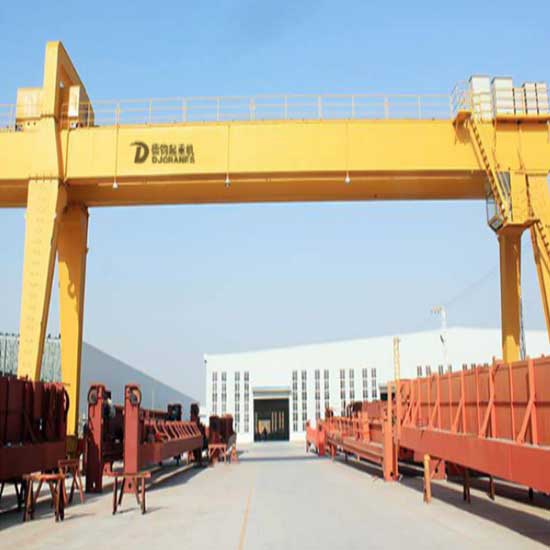
European style double girder hoist trolley gantry cranes: European type double girder gantry cranes with FEM standard wire rope hoists trolley with capacity of 5 ton up to 75 ton for sale.
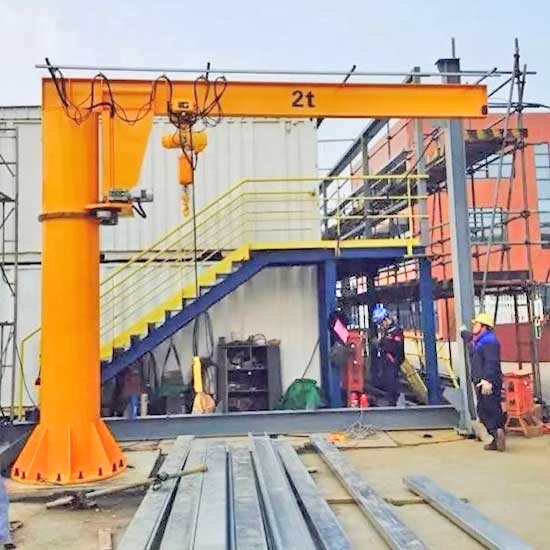
Free standing jib crane-Pillar mounted jib crane is a free standing jib crane with pillar jib mounted on floor, for short & crowded lifting, capacity up to 16 ton.
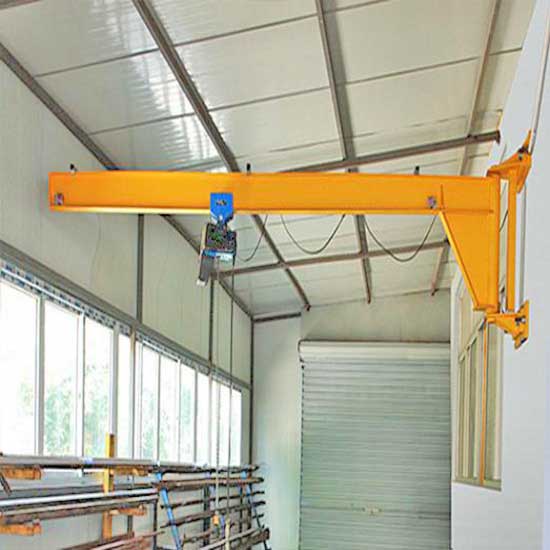
Wall mounted jib crane & wall bracket jib crane with I beam & tie rod design for light duty handling with capacity up 2 ton. or less building structure changes.
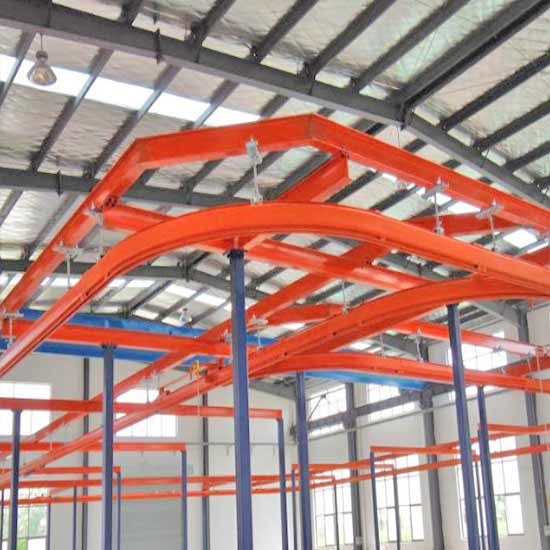
Light crane kbk system-kbk light crane systems, flexible kbk crane & rigid kbk crane, modular crane design, cost-effective workstation crane solution, tailored light duty bridge crane.
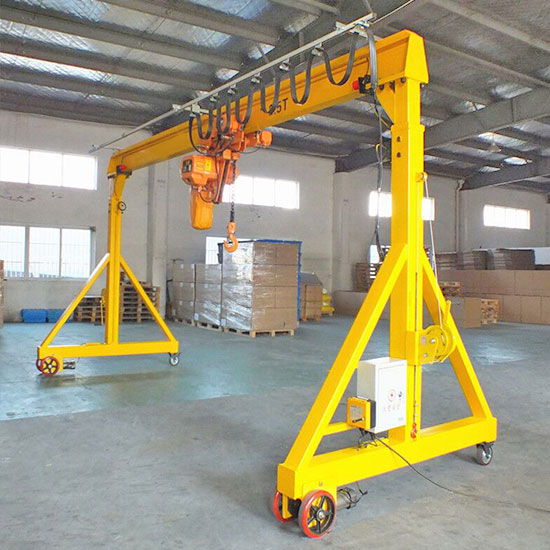
Portable gantry crane & Economical mobile gantry-250 kg - 10 ton portable gantry cranes & mobile gantry cranes with adjustable / fixed gantry for small & light material handling.
Industries that use bridge cranes
The supply change that transports needed raw materials and components to assembly activities is a critical factor in any industrial operation. Forklifts, pallet jacks, and AGVs can all help with these tasks in many circumstances. For the safety of workers and the effectiveness of the operation, a more accurate approach is required for more bulky items. Bridge cranes become indispensable in these scenarios.
Bridge cranes, unlike other industrial equipment, must be constructed and designed to fit the job, regardless of their size. A crane that is suitable for vehicle manufacturing may not be suitable for shipping operations. Cranes used in steel production are a good example of this.
Due to their safety, time savings, and ease of operation, bridge cranes have become an indispensable feature of countless production operations since their introduction during the first industrial revolution.
Auto Industry –Bridge cranes are used in the auto industry for a variety of tasks, including material handling, supply chain management, and lifting and transport. Bridge cranes are used in press plant operations to carry and store dies and tools, as well as maintain lines stocked. Workers at assembly facilities rely on bridge cranes to increase the efficiency of their work and eliminate the need to lift materials.
Bridge cranes are used in every operation of an automotive manufacturing facility because they save time and are more convenient. Their use enhances production and prevents supply chain disruptions that cause unnecessary delays.
Steel –The capacity to work in hard conditions at rising temperatures with high grade dust and strong vibrations is the fundamental criteria for cranes used in the steel industry. Ladle cranes are strengthened and stabilized to ensure that the ladle is handled safely and efficiently. For the transportation of components such as molds for casting and delivering casting pieces, double girder bridge cranes are used.
Bridge cranes are widely used in the steel industry for safety and efficiency. Tundish, slab, scrap, billet or ingot, coil, and foundry cranes, to name a few, are all types of ladle handling cranes.
Plastics –Extrusion, injection molding, and rotation molding are some of the molding technologies used in the plastics sector. Regardless of the method, numerous mold changes are required to maintain output and meet client expectations. The dies used necessitate meticulous handling and placement. When laying a die, the cranes utilized for these procedures can achieve millimetric accuracy.
Shipbuilding –Due to the nature of the materials necessary to build a ship, shipbuilding, like the steel industry, makes heavy use of bridge cranes. Jib, gantry, and overhead cranes are the three types of cranes most commonly employed in the business. A chain or wire rope hoist will be utilized, depending on the type of material to be moved.
Material handling throughout the assembly process is the primary role of bridge cranes in shipbuilding. Each phase of shipbuilding, including processing, assembly, fieldwork, launch, rigging, and delivery, requires the use of a bridge crane. Steel plate hooks and various types of chain hoists with electric motors are included in the shipbuilding bridge cranes, which are specifically constructed to match the space requirements.
Biomass –Waste, refuse, garbage, slag, sludge, and straw bales are all handled by biomass bridge cranes. Each form of garbage is handled by a different crane. Jib, gantry, and bridge cranes with chain and wire rope hoists are used in the biomass business, just as they are in other industries.
When opting to acquire a biomass crane, several factors must be considered, including truck delivery times, tonnage, biomass density, and the size and dimensions of the storage area. A bucket, orange peel, or clam shell device is used to grip the load in a biomass hoist.
Gas and Petroleum –Bridge cranes must be built to avoid burning the material because to the volatile nature of gas and petroleum. They're made of spark-resistant, explosion-proof materials. Designing cranes for offshore drilling locations is a difficulty for the oil and petroleum business. Initially, the business relied on land-based designs that were modified to match the specific circumstances.
Because offshore platforms face unique challenges, such as waves rocking a boat during loading and unloading, cranes are built to bear the load while also taking into account the load's distance from the crane. The mounting structure, as well as other relevant environmental variables, are also important considerations.
Food and Drink –In the food and beverage sector, hygiene and sanitation are the most important qualifications for material handling. Bridge cranes are used to carry rail-mounted containers for production or storage in the food processing industry. The primary reason bridge cranes are employed in food production is for efficiency, albeit keeping the cranes clean is a concern.
In the food sector, controlled surroundings are critical. Producers work to manufacture lifting equipment that is custom tailored to fit the environment in order to fulfill the needs and high standards.
Semiconductor –The semiconductor industry uses a range of heavy components that necessitate hygienic lifting solutions that do not contaminate the assembly. To fulfill industry quality standards, bridge cranes must be precise, accurate, clean, and efficient.
A bridge crane must meet cleanroom standards in order to be recognized by the semiconductor sector. Cleanrooms, unlike other material handling technologies, are closely checked for particle content of the dust in the room. Producing bridge cranes for the semiconductor sector has a unique set of challenges.
Mining –Because of the harsh nature of the mining industry, bridge cranes that can withstand the conditions are in high demand. Bridge cranes are used by the mining sector to repair and service underground mining equipment. The corrosive climate of mining operations causes equipment to deteriorate quickly.
Cranes for mining are large, heavy-duty machines capable of transporting many tons of material and equipment. They're made of metals that can withstand heat, dust, and moisture. Bridge cranes must be able to operate efficiently and continuously in adverse situations.
Paper –Because paper rolls are often destroyed by the slightest hit, the paper business requires high duty cranes that can handle materials with remarkable precision and gentleness. Paper is manufactured in incredibly large, heavy rolls that must be handled with care.
Cranes for the paper industry feature automated control systems that can be utilized for pulp production and paper manufacturing to protect workers. The crane's speed must be carefully controlled for proper material handling, and it must be fitted with slings for loading and unloading paper scrolls.
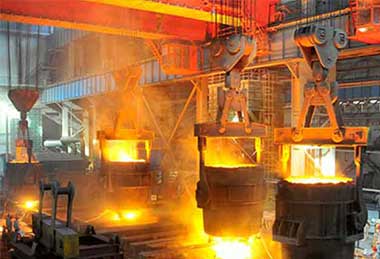
Metal Processing Industrial
Iron, steel, aluminum & basic metal processing industry cranes. Industry cranes for metal process- EAF charging & ladle crane, forging crane, finished product crane & scrap crane - for metallurgy harsh conditions, safe overhead travelling crane.
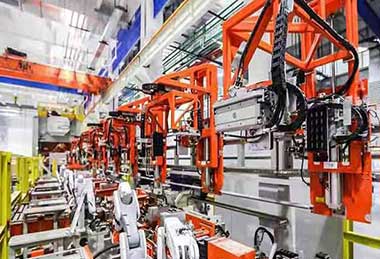
General Manufacturing
Types of industrial hoist & cranes for general manufacturing- Various types of industrial overhead crane systems for multiple sectors of manufacturing, integrated solution, maximum productivity, cost-effective price.
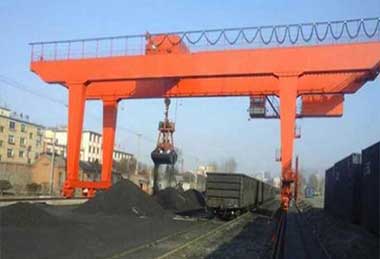
Mining Industry
Mining industry cranes, Coal mine crane systems - Safe industrial overhead crane & industrial gantry crane system for ore, limestone, coke, coal, slag, loose clay handling, explosion proof and durable.
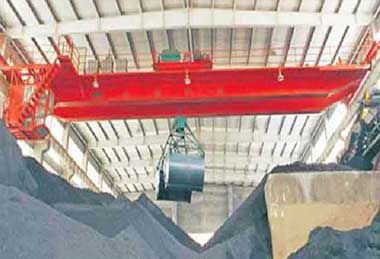
Energy Industry
Energy generation|Industrial cranes for types of power plants - Industrial cranes & hoists systematic solutions for various power plants,i.e, traditional fuel power & waste renewable energy, wind power, hydroelectric, biomass energy, etc.
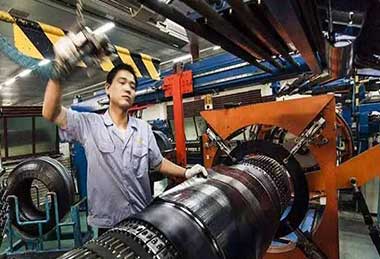
Machinery and Equipment
Industrial material handling cranes for mechanical engineering- Material handling cranes for mechanical engineering industry - overhead industrial crane solution for manufacturing of light & heavy machinery & equipment.
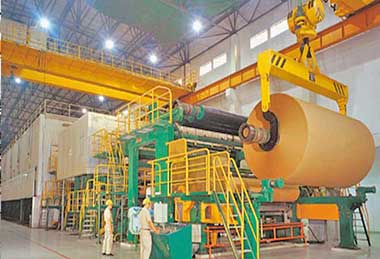
Pulp & Paper Industry
Pulp & paper| Industrial crane systems for paper making - Industrial overhead crane system for pulp & paper industry , full overhead travelling crane services, cost-effective paper making cranes for your paper mills.

Waste Management Industry
Waste management|Waste recycle & sorting industry cranes - Industrial overhead cranes for waste sorting&recycling. Types of industrial cranes in incinerator for mixing, stacking, handling and stirring of the waste materials, etc.
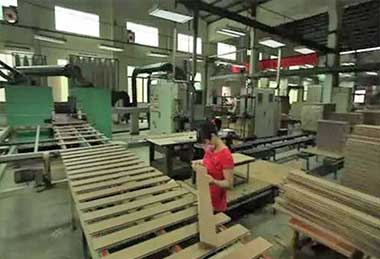
Wood , Timber & Furniture
Industrial cranes and hoists systems for timber & wood processing. Diverse overhead crane & hoists designs for material handling in sawmills or furniture plants, etc.
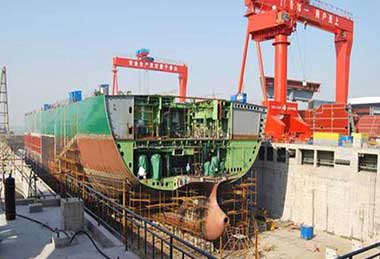
Shipbuilding & Boat Making
Industry crane systems for shipyard material handling, i.e, components assembly, boats & yachts lifting, etc. Reliable & safety industry crane system.
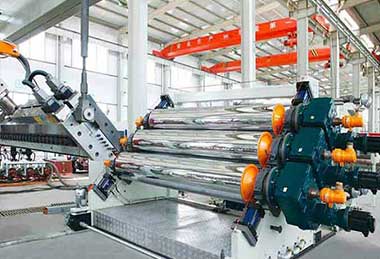
Plastic & Rubber
Industrial hoist and crane solution for plastic & rubber industry- Injection mould installation & Die exchanging- Efficient & Accurate heavy lifting systems.
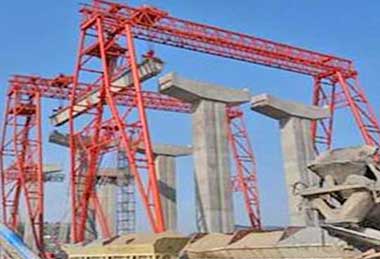
Construction and Infrastructure
Industrial material lift for construction & infrastructure- types of industry overhead travelling cranes, gantry & hoist crane system- Reliable & cost-effective.
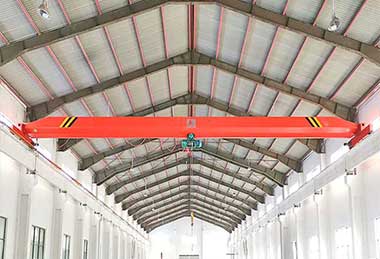
Chemical Industry
Industry cranes for chemical & petrochemical material handling, explosion proof overhead crane & hoist system for hazardous environment.
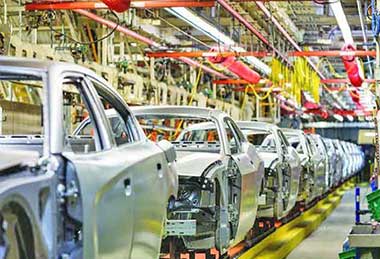
Automobile Industry
Automotive | Industrial overhead crane & hoist for automobile - Industrial cranes for automotive industry from press & assembly lines to workstations & warehouses, i.e., open winch crane & Light kbk, jib crane & chain hoists,etc.
Bridge crane Construction
Beyond what needs to be lifted or the type of items being loaded, there are other aspects to consider while building and selecting a bridge crane. Because bridge cranes are constructed, formed, configured, and engineered to match specific conditions, it's critical to know exactly how the crane will fit into the operation.
It is critical to plan and prepare meticulously for the installation of a bridge crane. Manufacturers collaborate extensively with their customers to ensure that what is planned and installed precisely matches their requirements.
Bridge crane Construction
One of the more expensive components of the construction process is the span, which is the distance between the runway rails. The amount of material required to create the girders grows as the span lengthens and widens, increasing the crane's weight and cost.
Load Capacity –The maximum load that may be applied to a crane under the specified working conditions is used to determine its capacity. The first condition to consider when calculating load capacity is the size and weight of the material to be lifted. After determining the weight capacity, the type of hook and hoist can be chosen.
A twin girder design may be required in scenarios where the crane will have a wide span, capacity, and must withstand harsh conditions. Double girders are built of welded reinforced steel for further strength.
Classification –The Crane Manufacturer Association of America has developed six classifications for bridge cranes . The following criteria are used to determine a crane's classification:
- Frequency of use and material transfer speed
- Average load Number of full capacity lifts
- Number of lifts per hour
- Maintenance cycle
- Number of full capacity lifts
Occupational setting
Work Environment –The severity, amount of impediments, and hazard of the work environment are all important considerations while building a bridge crane. To protect the crane from deteriorating due to heat, chemicals, fumes, steam, dust, or moisture, particular building materials are required. A variety of coatings may be required for protection and proper crane operation.
Explosion proof credentials are required for operations with the potential for explosions, such as wastewater treatment, fertilizer plants, and oil and gas processing, which means the crane must not emit sparks. A pneumatic air-powered system or a specifically built explosion-proof electrical system is used to operate this sort of crane.
Runway –Depending on the sort of structure where the bridge crane will be situated, installing the runway can be difficult. This does not apply to gantry models with supporting legs, as the runways are situated along the upper half of the walls in structures. The length of the runway is the first factor to consider because it controls the pace and movement of the trolley and hoist up and down the runway.
Building Structure –The runways are designed as part of the construction and are included in the designs when a crane is installed in a new structure. Crane tolerances are more restricted than conventional building requirements in this scenario, thus the contractor must pay particular attention to them.
Conclusion
- An overhead crane, also known as a bridge crane, is a type of heavy-duty machinery capable of safely and precisely transporting extremely heavy goods and equipment from one area to another using the overhead space of a manufacturing facility.
- Bridge cranes are available in a range of sizes, styles, shapes, and configurations, with easily interchangeable components and attachments to improve capacity and performance.
- When it comes to moving big goods or exceptionally heavy loads through a production facility, using a bridge crane is more convenient and efficient than navigating corridors and floor space.
- Work can be more productive, cost-effective, and safer by utilizing a factory's overhead area by building a bridge crane.
Bridge cranes are available in many different configurations, sizes, forms, and designs. Each type is custom-engineered to meet the requirements of a certain application. Any need of hoist or crane, please feel free to contact us. WhatsApp/ WeChat: + 96 151 3871 1597.